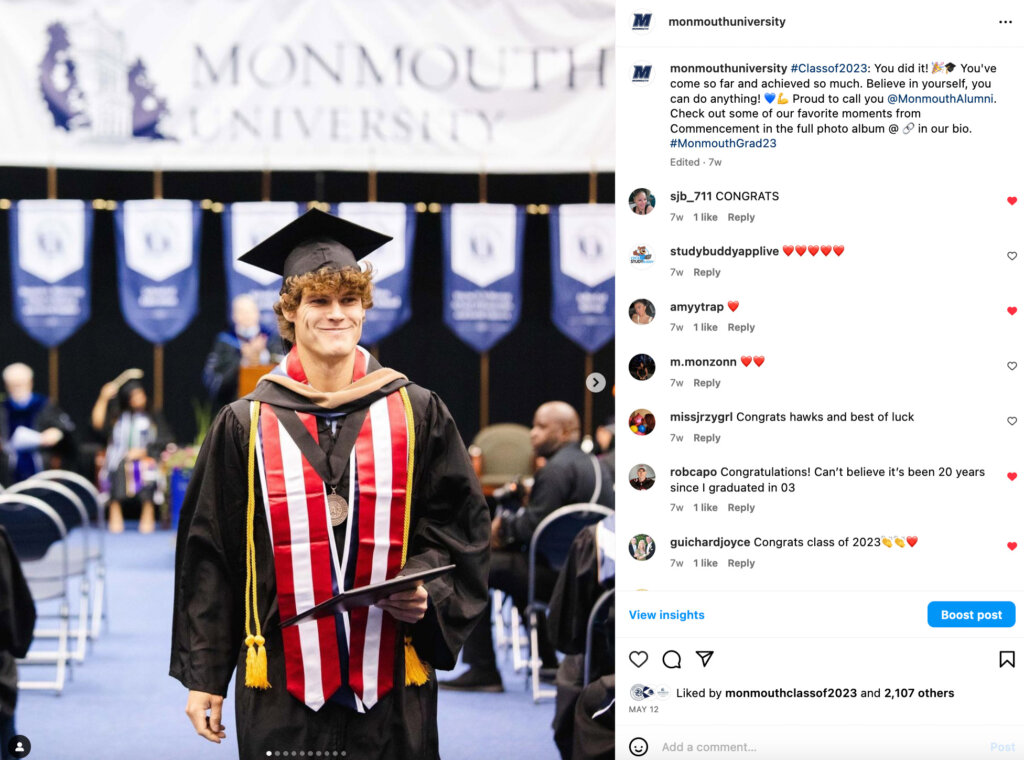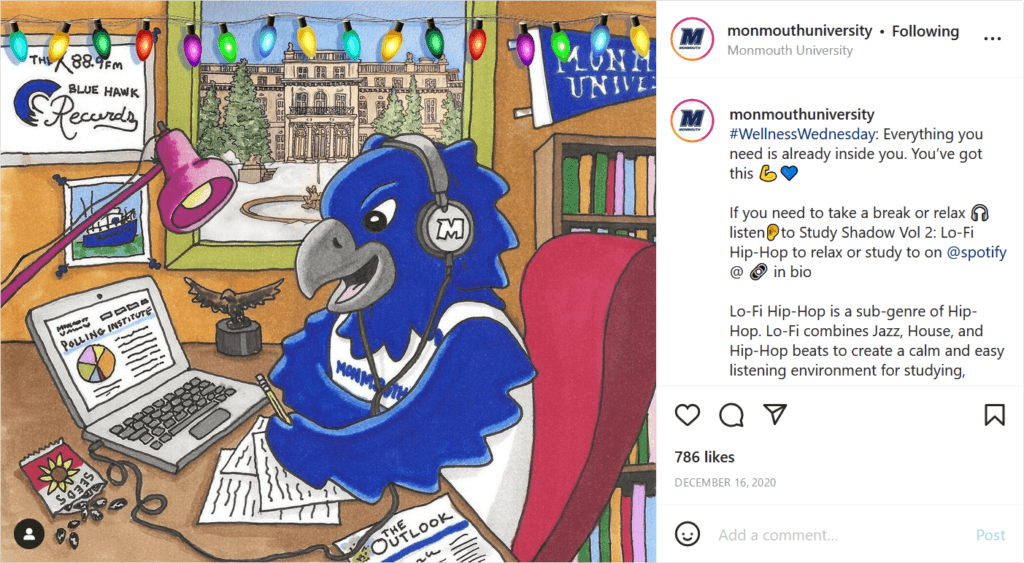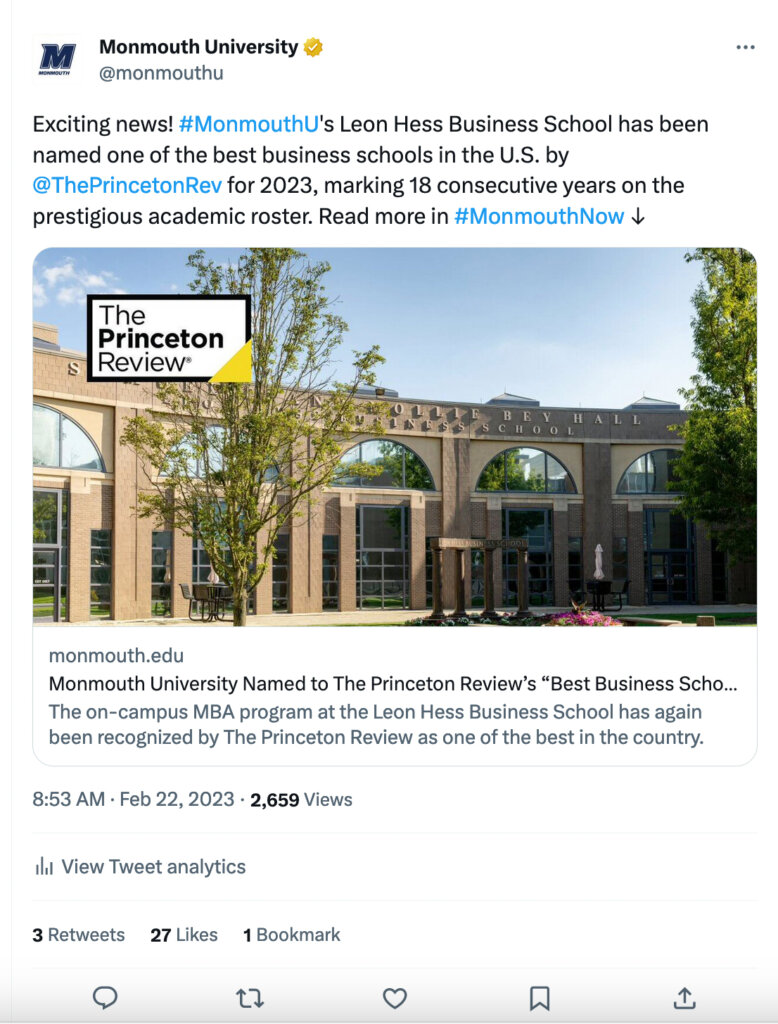Style Guide Purpose
The purpose of this guide is to outline the overall style and direction for the University’s main social media accounts. These guidelines may also be helpful for starting and managing University-affiliated accounts, including departmental, affinity group, student clubs and organizations, and other similar accounts.
Table of Contents
- Active Accounts
- Social Media Voice
- Brand Personality
- Strategy
- Content Planning
- General Style Guidelines
- Examples
- Now let’s put this into practice
Active Accounts
Social Media Voice
Who we are
Our social media identity is inspiring, inquisitive, caring, determined, confident, and engaged. We value all of our alumni, students, faculty, and staff; and their intellect and academic achievements. We are an institution of higher learning, embrace it. We love our #HawkFamily.
Channel Voice
Each social media channel has its own language and requires modified content. All channels are unique and users will have varied expectations for each account. While it’s important that your message gets across, your audience expectations matter. Create each post in the appropriate format for the channel.
Tone
Our tone is reflective of the following personality dynamics: Inspired Explorer, Determined Leader, and Caring Guide. Implement these traits into posts across all channels.
Brand Personality
Like a person, a brand has traits and characteristics that give it an authentic personality. When we speak as one “person,” we own a voice that’s uniquely ours. It’s the university’s outward expression. That one distinct, consistent, and relevant voice must translate across all media, messages, and moments. It should be personified and real.

The Caring Guide
Supportive and selfless, driven by compassion, warmth, and the desire to care for others. Delivers nurturing, comfort, and protection. Values altruism, commitment, and generosity. Causes people to feel valued and supported.

The Determined Leader
Powerful and resilient, driven by growth and a desire to challenge the industry through determination and strength. We deliver pride, perseverance, and stability. We value fortitude and accomplishment. We strive to for people to feel triumphant and inspired.

The Inspired Explorer
Adventurous and inquisitive, driven by the quest for discovering the unknown. We deliver progress and an unmatched interest for uncovering truth. We value investigation, curiosity, and trailblazing. We strive for people to feel intrigued and emboldened.
Strategy
Every social media account and post represents Monmouth University and the brand. It is imperative to have a clear strategy with both short-term and long-term goals. Identifying your audience, the purpose of the account, a brand voice and persona, and the mission of the content are the initial steps to creating a proper post.
Our strategy requires that all social media posts mirror the University Editorial Guide for written content and the University Visual Identity Guidelines when creating profile pictures, cover photos, graphics, or any additional visuals. Always reference the following guidelines when curating content:
Editorial Guide > Visual Identity Guide >
Content Planning
Creating a successful social media presence begins with content planning and consistency. Generating a three-month content calendar comprised of 15-20 potential posts per month is ideal. Brainstorming topics that are relevant to our specific audience – sub-sets of Monmouth University – is also extremely helpful.
Department-led and Student-run accounts
Identify team roles and role descriptions clearly before beginning a content plan and social media account. Understanding who is assigned primary responsibility is paramount. In the event that roles change or the account manager leaves the University, a plan must be in place for the transition of management. Sharing logins or the use of a password manager is always helpful.
When representing the University, always remember:
- Avatars should be University-approved department and office logos or an iconic image of campus.
- Remain in line with the University’s guidelines to achieve your strategic goals.
- Create a content calendar.
- Be consistent with the brand voice/persona.
Use the Monmouth community to your advantage by mentioning other Monmouth-related accounts. For example, including @monmouthu, #HawkFamily, or other related University accounts can help amplify your message.
General Style Guidelines
Creating a successful social media presence begins with content planning and consistency. Generating a three-month content calendar comprised of 15-20 potential posts per month is ideal. Brainstorming topics that are relevant to our specific audience – sub-sets of Monmouth University – is also extremely helpful.
Content
Always be specific to Monmouth University and focus on points of differentiation and why the content is unique to Monmouth.
When it comes to multimedia:
- Ensure images and videos meet size requirements of each platform and are of the highest possible quality.
- Images and videos should not be blurry, pixelated, or contain sound issues.
- Design applications like Canva can assist in creating images to each platform’s appropriate size requirements.
It’s also good to share original images and videos of events happening in real time around campus. The Monmouth University image database is an additional resource for photos.
When creating content, work to ensure compliance with the Americans with Disability Act (ADA) requirements:
- Avoid posting flyers and images with heavy text. Any text on the image must be included in the alternate text (AltText) for the content to be compliant.
- Include Alt Text, closed captions, and transcripts when posting content. Make sure all media can be understood without sound.
- When using long hashtags, capitalize each word in the phrase. Screen-reading software will have an easier time knowing when one words ends and the next starts, making it easier to interpret.
Instagram Guidelines
For assistance with developing a social media strategy for Instagram, refer to the Instagram guidelines.
Text
Always be specific to Monmouth University and focus on points of differentiation and why the content is unique to Monmouth.
Always be clear and concise when posting:
- Use line breaks rather than large blocks of text.
- Remain within 280 characters or less, when applicable.
- Avoid posting links in copy on Instagram
- Avoid mentioning more than four accounts in a single tweet, line breaks, and more.
- Be sure to modify text depending on the platform.
Dates and Times
When referencing dates and times there is a model to follow on all social media platforms. Due to limitations on character counts, these guidelines diverse from the University’s editorial style guide. Please use the following guidance for social media posts only.
For time:
- Use a.m. and p.m. (lowercase, periods). Ex: 3 p.m., 10 a.m.
- Use “to” between a time period (Ex: 2 p.m. to 4 p.m.). If space is needed, then it is acceptable to use a dash (Ex: 2-4 p.m.).
For months, days, and dates:
- Spell out the full words for days of the week (Ex: Monday, Tuesday) and use dates (Ex: 11/19) to save space or reference dates in advance.
- Months can also be abbreviated for space (Ex: Jan., Feb.).
Using Links
When utilizing links in social media posts, always shorten the link to save space. You can use sites like bit.ly or Hootsuite to create a shorter hyperlink.
Do not use a link for one platform on a different platform. For example, sharing a Facebook or Instagram link on Twitter.
Words We Do Not Use
There are certain phrases and words to try and avoid on social media.
- Instead of using “dorms” use “residence halls.”
- When referring to the University itself, do not use “MU.” Instead use “Monmouth University” or “Monmouth.”
See the editorial style guide for additional information on word and style guidance.
Examples




Now let’s put this into practice!
Here are questions to help guide you and your social media team when creating a strategy:
- Who is your audience? (Think age, location, interests, behaviors, what social networks does your target audience use, etc.)
- What are your goals for using social media? (i.e. be an informative resource, encourage event attendance, increase club membership.)
- Who will take primary responsibility of these platforms and when? (We suggest at least one student and one faculty/administrator have consistent access.)
- How will login information be stored/managed?
- In the event that your role changes, or you leave the University, how will you transition management of accounts?
- What kind of content will you post?
- What other social accounts could you tag/generate community outreach with?

